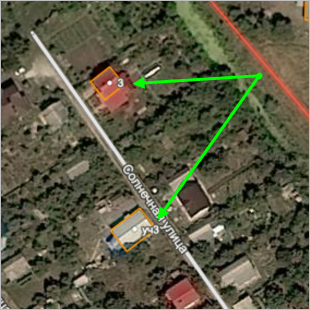4.1.4. Adding attributes to addresses
The general rules for assigning house number are described in Section 3.5.2.2. Number.
4.1.4.1. Number
Enter the house number as the Official
name.
Follow these rules when entering numbers:
4.1.4.1.1
-
If the address starts with an additional detail, it is omitted except in the following cases:
- Omitting it creates a duplicate address.
- There's a letter designation after it.
- It refers to an internal address at a cemetery.
- The
корпус
detail is specified before the house number.
Abbreviations that you should use in the address:
-
владение →
вл
-
здание →
зд
-
корпус →
к
-
строение →
с
-
часть →
ч
-
флигель →
фл
-
позиция →
поз
, секция →ск
(used for addresses in buildings under construction) -
павильон →
пав
-
секция →
ск
-
сектор →
сек
-
помещение →
пом
-
литера →
лит
(used in rare cases when it's impossible to identify the addresses otherwise) Example (taken from St. Petersburg):-
If the litera (литера means litera in English) is numerical instead of alphabetical, the address is written as 1лит2 instead of 12.
-
If a building doesn't have a number and only has a litera: the address
литера Б
is written as литБ instead of Б. -
If an address contains characters that can be confused with each other (the letters О and З and the digits 0 and 3), write it as 23литЗ (with the letter З), 23литО (with the letter О). Then, add a synonym name: 23З, 23О (type
also known as, historical
). -
If there are two real addresses on the same street that belong to different houses and only differ in the word
литера
: one address should be written as27АА
, while the other should be written as27АлитА
(or27Б
and27литБ
) to avoid duplicate address points. -
If there are two real addresses on the same street that are only different in that one of them uses a space (for example,
3к361А
and3к361 А
): in this case, write the litera instead of the space (3к361А
and3к361литА
).
Other cases (not listed above) allow using addresses with the
лит
abbreviation inAlso known as, historical
names, while the official address name must include only the numbers, without the wordsлит
orлитера
). -
-
участок →
уч
(no spaces, уч3).
For houses located in a locality, a cottage settlement, or a farming co-op that don't have a real address but still have some form of numeration, don't write
уч
before the plot number. -
почтовое отделение →
п/о
-
квартал →
кв-л
(section numbers should be separated by a space), only used for sections in cemetery addresses.
4.1.4.1.2
-
Rules for using upper- and lowercase in addresses:
-
Lowercase letters should be used with the abbreviations listed above, see section 4.1.4.1.1 (excluding literas).
-
Uppercase letters should be used with literas; for example, 27литА, where А is a litera.
-
4.1.4.1.3
-
If corner buildings have an address written with a forward slash or have two different addresses (one for each street), then create address points for each of the corresponding streets. Enter Official and Also known as names for each address.
If a fraction is used in the form of the address used locally (including on signage), then the official name should include the forward slash (and the name without the sign should be entered under "also known as").
If a number with no slash is used locally, then enter the official name without one (and use the slash for the "also known as" option).
Also see point 3.5.2.2.5.
Note
If the "also known as" name is exactly the same as the other address on the same street, don't enter it.
Examples of addresses:
-
-
12к7
-
дв23Ак1с3
-
дв12Асоор10
-
12пав6
-
12бокс7
-
12ск2
-